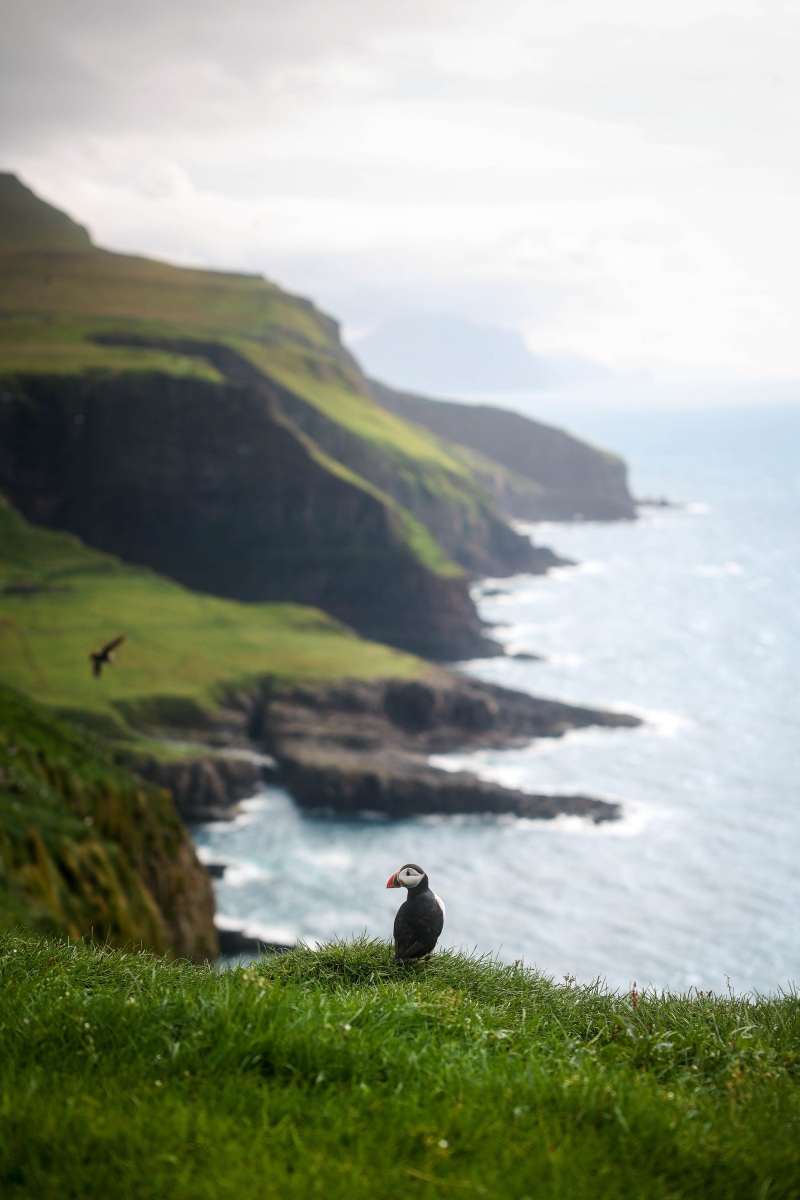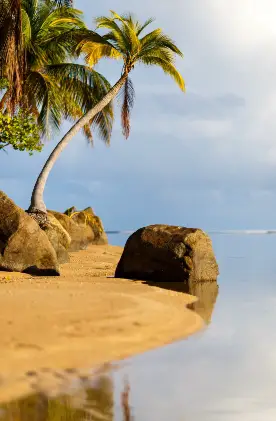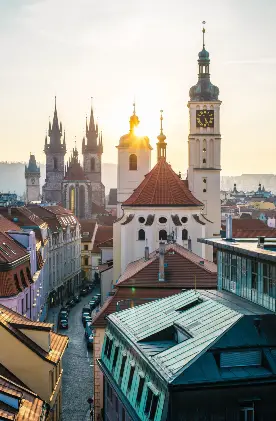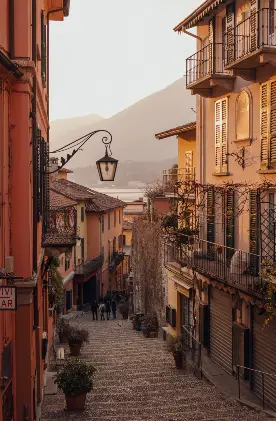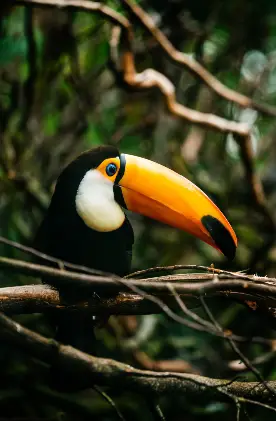Along with destinations like Iceland and Norway, the Faroe Islands is one of the best places in the world to spot puffin birds. Up to a million of these feathered friends breed on the archipelago during summer and seeing them on your trip is a bucket-list activity. Whether you consider yourself an avian enthusiast or just a seeker of unique experiences, searching for puffin birds in the Faroe Islands is an adventure you will cherish forever.
Puffins are a symbol of the Faroe Islands – and its dramatic cliffs, green meadows and otherworldly waterfalls make for a birdwatching paradise. But traveling to and around the remote Faroe Islands is no easy task. That is why we recommend booking with a local tour operator called Outdoor and following tips in order to increase your chances of spotting these cute creatures. So, let us dive into the secrets of finding the charismatic puffin.
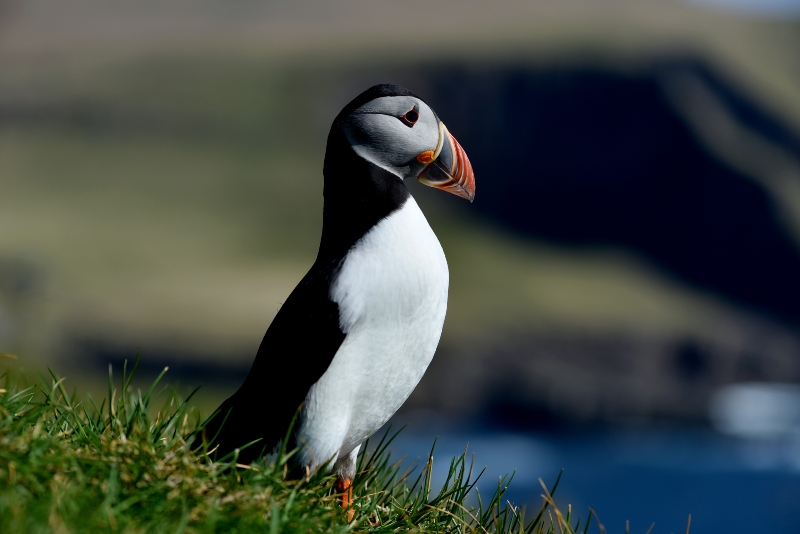
Timing is Everything: Visit Between May and August
If you have ever dreamt of witnessing a puffin extravaganza amidst natural beauty, then pack your binoculars and raincoat for the months between May and August because the Faroe Islands are calling. These clown-faced seabirds make the Faroes their summer vacation spot and you too can join the party. The best time to visit the Faroe Islands for puffin watching is during late spring to early summer, from mid May to late June.
This is when these seasonal visitors descend upon the cliffs and sea stacks, and start breeding. May marks the grand puffin homecoming as they return from their winter adventures at sea. The cheeky birds nest on steep cliffs, and the Faroes’ rugged coastline provides them with the perfect real estate for this. June is when the puffin colony is in full swing. Their burrows are bustling with activity as they tend to their pufflings and pose for photos.
You will get a front-row seat to watch them catching fish and performing aerial acrobatics. The longer daylight hours in summer mean you can puffin-watch late into the evening. While May and June are the prime puffin months, don’t forget to check the forecast. The Faroes are known for their unpredictable weather – so pack layers, waterproof gear and sturdy hiking boots. Trust us: you will want to be comfy while puffin-spotting.
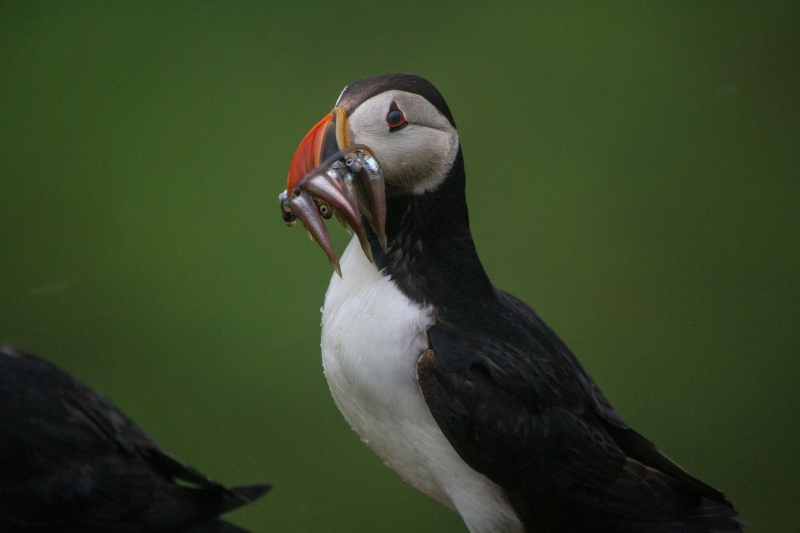
Best Places to See Puffin Birds in the Faroe Islands
Mykines Island
Start your puffin pursuit on Mykines, the westernmost of the 18 main islands of the Faroese archipelago. This beautiful destination is home to thousands of puffin birds and one part of the island to spot them in large colonies is at the iconic Mykines Holmur Lighthouse. As you hike and stroll along the cliffs, the birdlife will serenade you with their unmistakable calls and put on a show as they dive head first into the sea in search of fish.
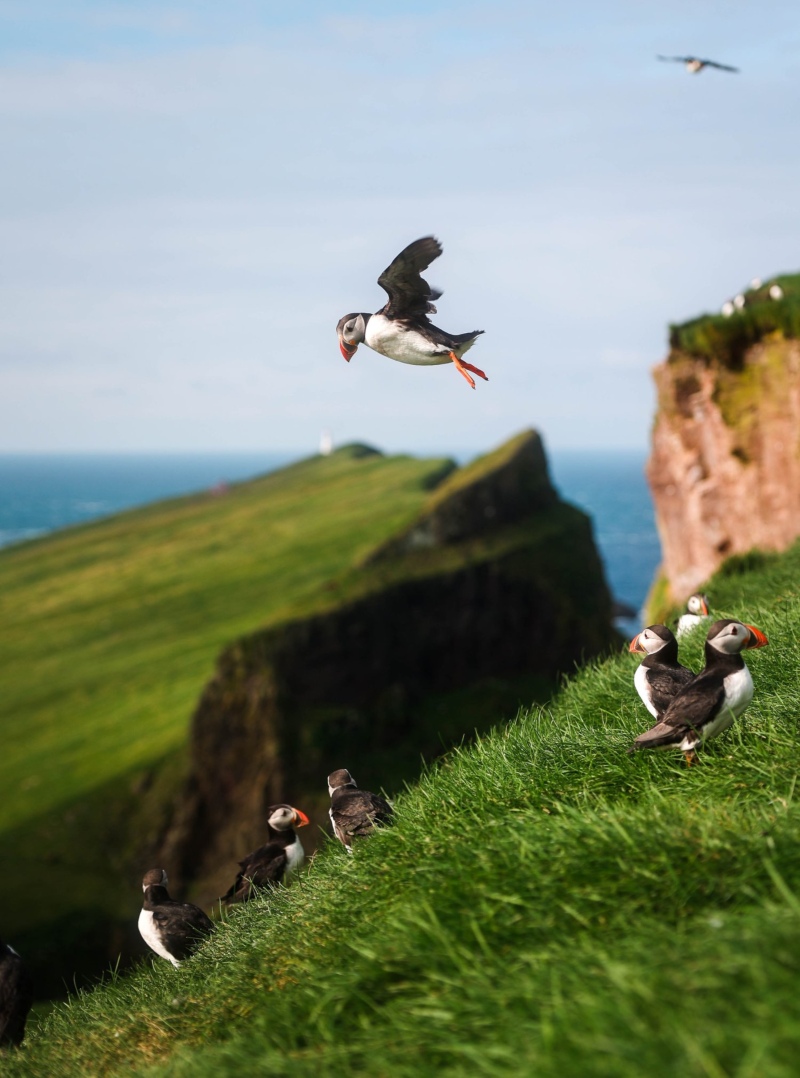
Skuvoy Island
For those who like to wander off-the-beaten-path, Skuvoy is your answer. With a population of only 40 people, but thousands of puffins, it’s nothing short of a nature and wildlife utopia. Take a boat trip there and prepare yourself for puffins galore, inhabiting the lush grassy areas that face the sea. Visitors can also find steep bird cliffs where various species hang out. While on the island, exploring the valleys and colorful houses is a great idea.
Vagar Island
Vagar is a lesser-known gem for puffin spotting. Here, you will discover puffin colonies with a backdrop of sea stacks and panoramic views. The birds are found in the turf above the cliffs and they start preparing burrows in late May. It’s important to keep your distance, as baby puffins hatch out of their eggs in July but in the first few weeks they don’t leave their burrows. Make sure to respect their environment so they can flourish.
Nolsoy Island
Nolsoy, the nearest island to the capital, Torshavn, is also puffin territory. A short ferry ride will take you to the island’s jaw-dropping cliffs, where these birds nest in burrows. This island is a great alternative to Mykines, as it’s easier to reach and less crowded. The northern point of the island is called Stongin and it’s here that you can immerse in a bird paradise – hundreds of puffins flying back and forth into the sea from the cliffside nests.
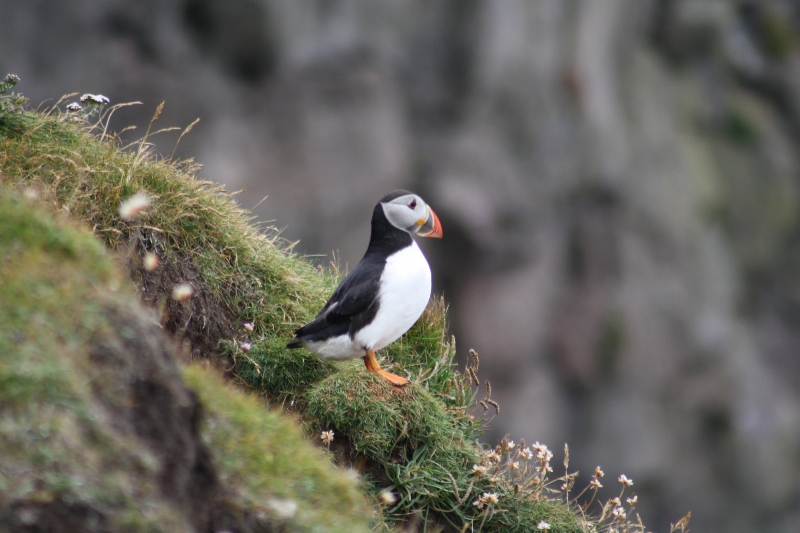
Tindholmur Island
Tindholmur might be tricky to reach but the effort is worth it. Boat tours offer access to this wild, bird-rich islet, where puffins thrive alongside other seabirds. For those exploring on land, the islet’s edges are bursting with birdlife and puffins’ nests during the summer. The towering cliffs and dramatic landscapes are another reason to visit Tindholmur – making it an Instagrammer’s dream come true – so be sure to bring your best camera.
Why Book with Outdoor to Witness Puffin Birds
To elevate your trip in the Faroe Islands, look no further than Outdoor – experts in puffin spotting. With years of experience and a team of professional guides, you are in safe hands as you set off to marvel at these delightful birds. Outdoor takes you to locations in the Faroes where puffins congregate in their thousands. For example, the Weekly Public Tour to Mykines leaves every Monday and guarantees an exhilarating time.
In addition to getting close to puffins, this tour includes sailing past Drangarnir and Tindholm, and stopping for coffee or tea at the island’s only village that boasts turf-roofed houses. The guides will share fascinating facts about Faroese culture and the puffins behavior, leaving you informed and amazed at the same time. With a commitment to responsible tourism and sustainability, there is no better tour company to book with.
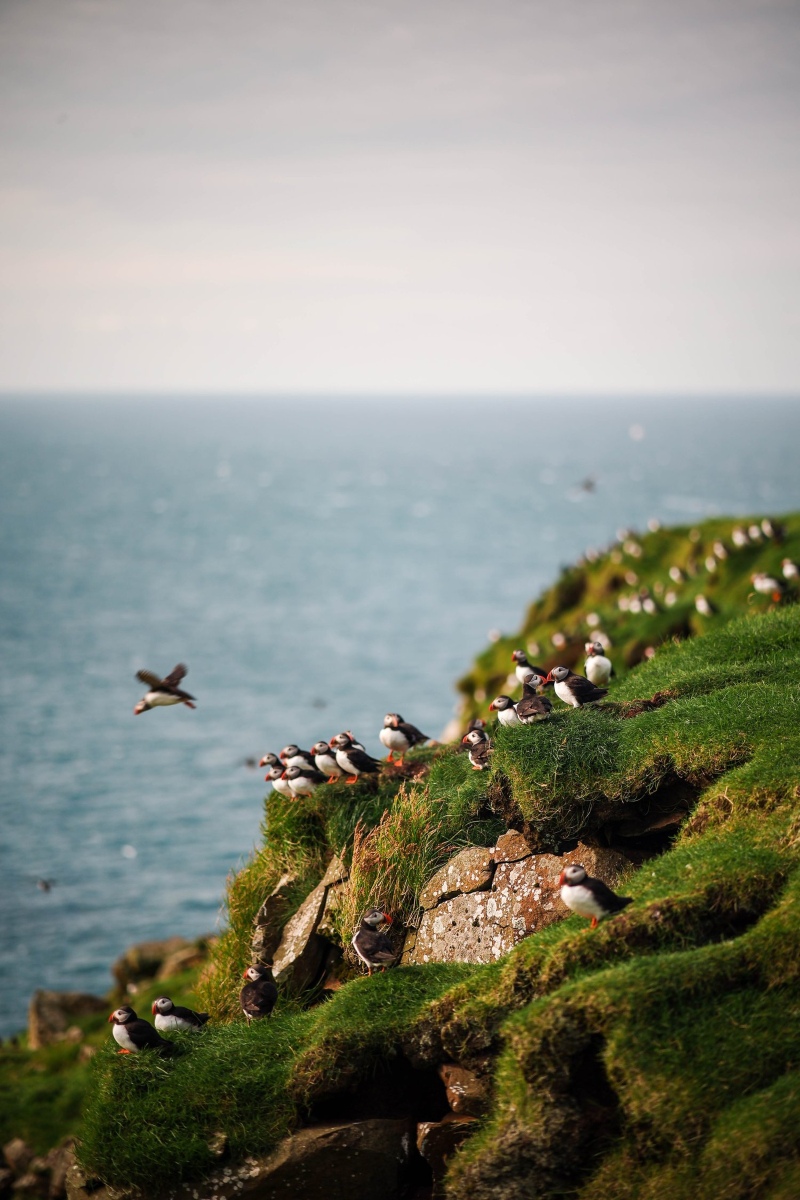
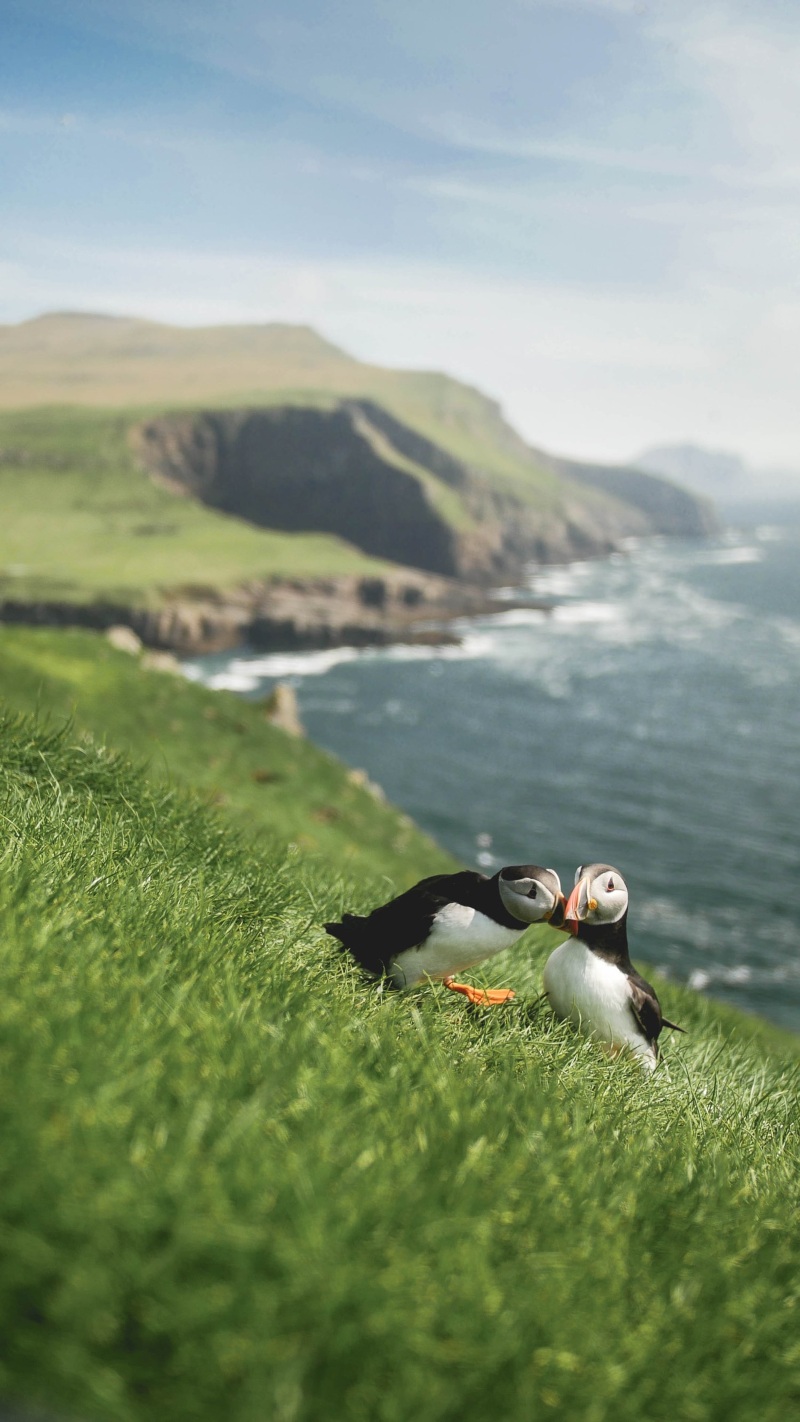
Final Tips for Spotting Puffin Birds in the Faroe Islands
- The Early Bird Gets the Worm: Puffins are early risers. Getting up at the crack of dawn gives you the best chance to see them in action. They start their day early but also stay active well into the evening (6:00 pm – 10:00 pm) – so an early morning or late evening adventure can work either way. Time your birdwatching right in the Faroe Islands, otherwise you might hike a long distance and be disappointed when they have flown away.
- Be Patient and Quiet: Puffins can be shy. Find a comfy spot away from their burrows and nests, stay still and keep the noise level down. Puffins appreciate a bit of peace and quiet just as much as we do. A good pair of binoculars can turn a distant speck into a puffin superstar, so don’t forget to bring them. And dress warm and waterproof, just in case you have to wait a while and get an unexpected surprise from the weather.
- Learn About the Birds: Before setting off on your puffin birds tour of the Faroe Islands, try to educate yourself as much as possible about the birds – like how they hunt for fish, how they spend their time out at sea, when they breed on the cliffs of the Faroe Islands, how they build their burrows and nests, and how long it takes for pufflings to grow into full grown adults. Knowing their habits can help you spot them much more easily.
